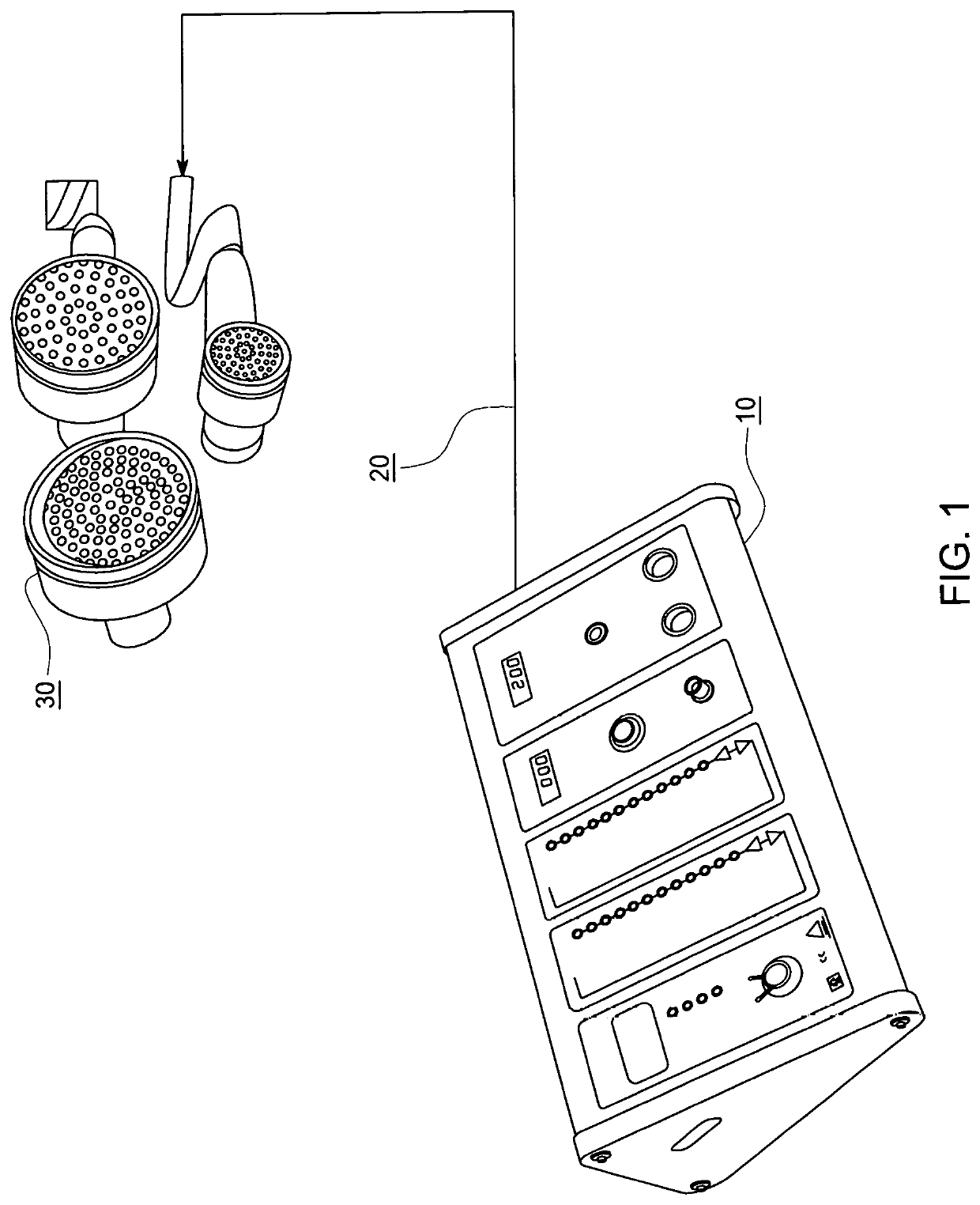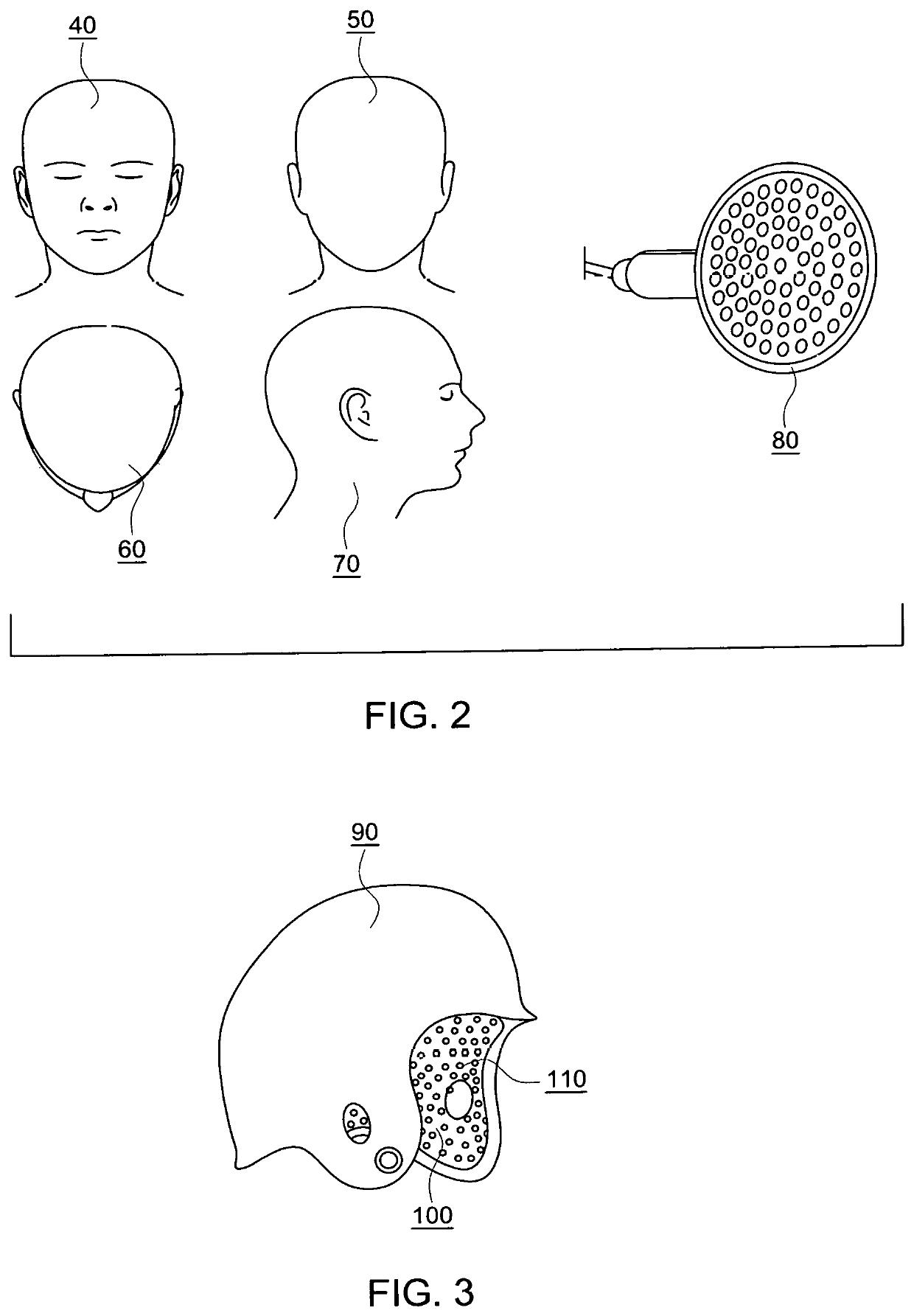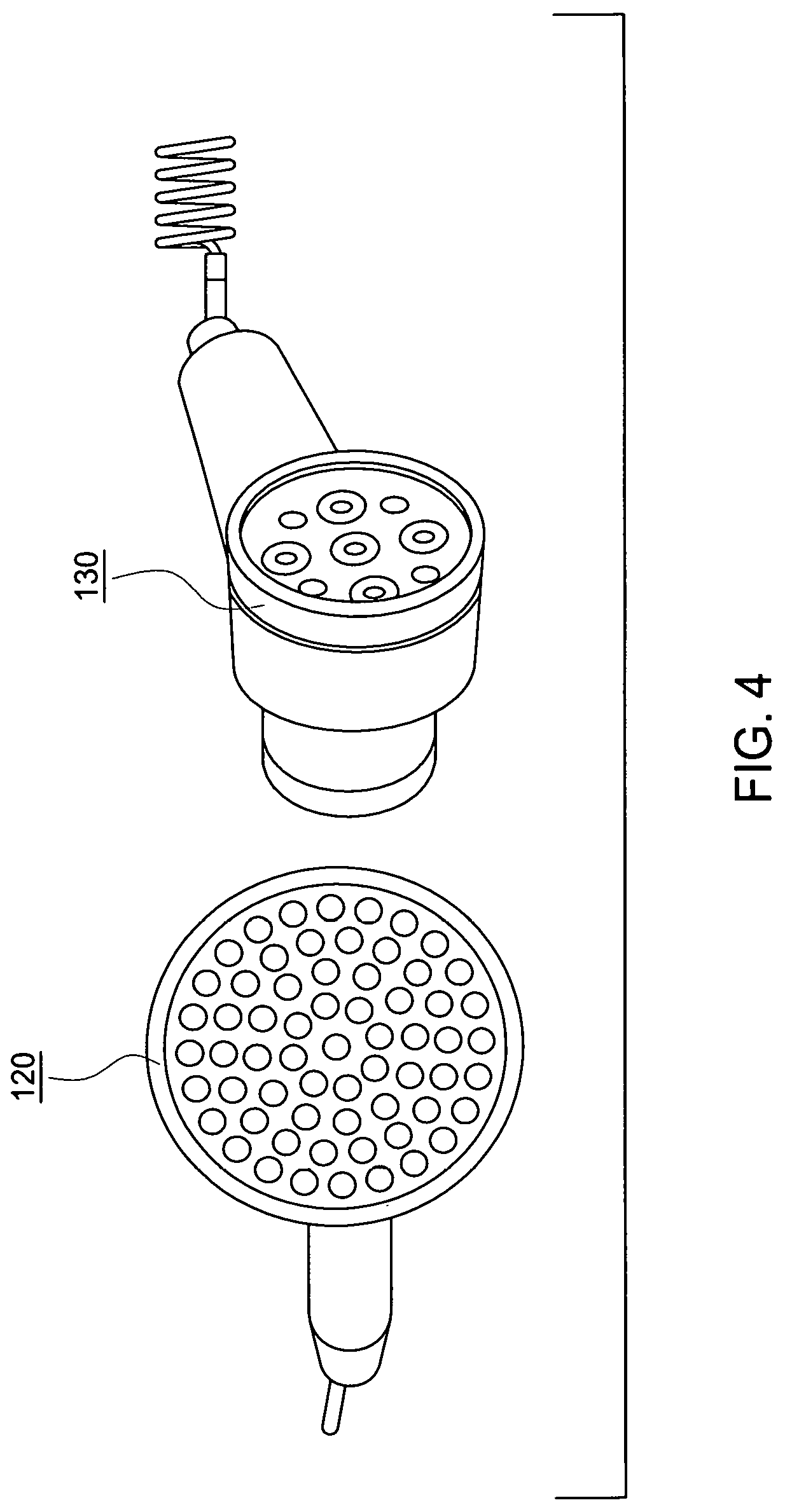System and methods for treating brain related conditions with photobiomodulation therapy
- Summary
- Abstract
- Description
- Claims
- Application Information
AI Technical Summary
Benefits of technology
Problems solved by technology
Method used
Image
Examples
example 1
nt of the Hardware / Software Systems
[0101]The base laser unit 10 should be placed on a mobile cart or tray. The unit 10 is plugged into the electrical receptacle of a 110 volt 15 amp electrical socket. The laser probes 30 should be placed in the two ports on the right side of the unit 10. Usually a 69 or 104 LED probe and a Laser / LED probe should be available for use. The timer is set to 1 minute on the left side of the unit and the frequency is set to 2.5 Hz on the right side of the unit 10. The key is then placed in the control locking system and the unit 10 is turned on. The operator then waits for the calibration lights. Once the unit 10 beeps and lights up, the unit 10 is now ready to complete the entire treatment protocol. There is nothing else that needs to be done to the unit to finish treating the patient. The patient should be placed on a bed with a pillow or a chair that does not extend beyond the shoulder to keep the occipital portion of the brain and neck exposed. Since ...
example 2
the 9 Point Treatment Pattern to Concussion Patients
[0102]Using the methods described in Example 1, the inventors have now applied the LLLT to concussion patients.
[0103]To apply the light to the head using the 9 point pattern, the patient is inspected and instructed to remove any eyewear, hats, hair bands or large earrings. If the subject has thick hair, the hair is parted in order to get direct exposure to the skin. The laser probe 30 is placed on the center of the head (point 1 in FIG. 5). It is important to keep the laser as perpendicular to the center of the head as possible as the photons need to be delivered in a straight line, not on an angle. Once the laser has been properly placed, the button on the top of the probe 30 is pushed to start treatment. The on / off switch is a push button switch, meaning that it does not have to be held down, just push it and release. When the treatment is finished, the timer will automatically turn off the probe 30.
[0104]The laser probe 30 is th...
example 3
the 9 Point Treatment Pattern to Depression Patients
[0111]Inspect the patient and have them remove any eyewear, hats, hair bands or large earrings. If the subject has thick hair, part the hair in order to get direct exposure to the skin. Place the laser probe 30 on the center of the head point 1 in FIG. 6A. It is important to keep the laser probe 30 as perpendicular to the center of the head as possible as the photons need to be delivered in a straight line, not on an angle. Once the laser probe 30 has been properly placed, push the button on the top of the probe 30 to start treatment. The on / off switch is a push button switch that may be just pushed and released. When the treatment is finished, the timer will automatically turn off the probe 30.
[0112]The laser probe 30 is moved to the 2nd position as shown in FIG. 6A. The 2nd point is located at the left side of the occipital and behind the left ear. It is important to note the probe needs to be placed so the edge of the probe is s...
PUM
 Login to View More
Login to View More Abstract
Description
Claims
Application Information
 Login to View More
Login to View More - R&D
- Intellectual Property
- Life Sciences
- Materials
- Tech Scout
- Unparalleled Data Quality
- Higher Quality Content
- 60% Fewer Hallucinations
Browse by: Latest US Patents, China's latest patents, Technical Efficacy Thesaurus, Application Domain, Technology Topic, Popular Technical Reports.
© 2025 PatSnap. All rights reserved.Legal|Privacy policy|Modern Slavery Act Transparency Statement|Sitemap|About US| Contact US: help@patsnap.com



